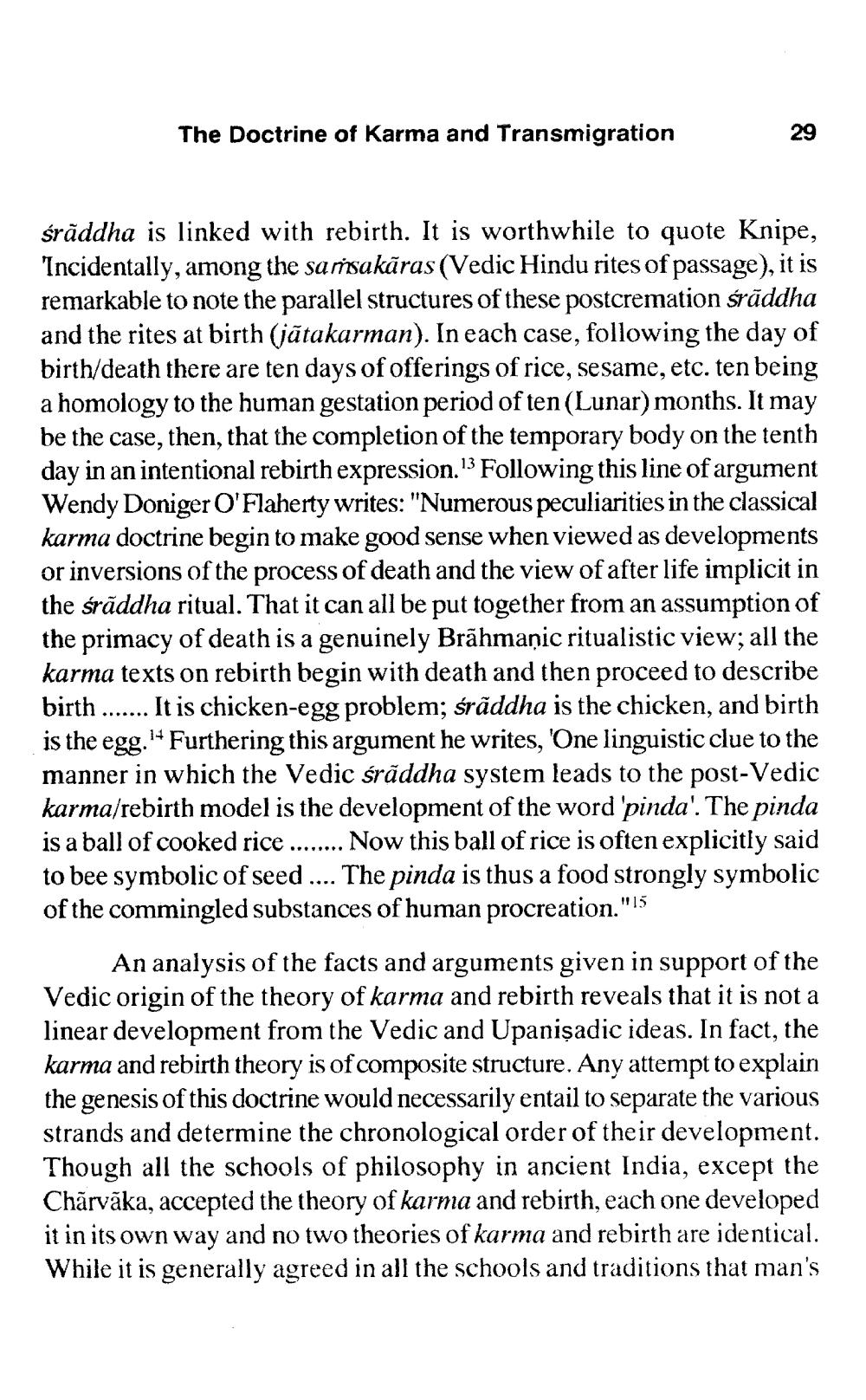________________
The Doctrine of Karma and Transmigration
29
śrāddha is linked with rebirth. It is worthwhile to quote Knipe, 'Incidentally, among the saṁsakāras (Vedic Hindu rites of passage), it is remarkable to note the parallel structures of these postcremation śrāddha and the rites at birth (jātakarman). In each case, following the day of birth/death there are ten days of offerings of rice, sesame, etc. ten being a homology to the human gestation period of ten(Lunar) months. It may be the case, then, that the completion of the temporary body on the tenth day in an intentional rebirth expression. Following this line of argument Wendy Doniger O'Flaherty writes: "Numerous peculiarities in the classical karma doctrine begin to make good sense when viewed as developments or inversions of the process of death and the view of after life implicit in the śrāddha ritual. That it can all be put together from an assumption of the primacy of death is a genuinely Brāhmaṇic ritualistic view; all the karma texts on rebirth begin with death and then proceed to describe birth ...... It is chicken-egg problem; śrāddha is the chicken, and birth is the egg. * Furthering this argument he writes, 'One linguistic clue to the manner in which the Vedic śrāddha system leads to the post-Vedic karma/rebirth model is the development of the word 'pinda'. The pinda is a ball of cooked rice ....... Now this ball of rice is often explicitly said to bee symbolic of seed .... The pinda is thus a food strongly symbolic of the commingled substances of human procreation."15
An analysis of the facts and arguments given in support of the Vedic origin of the theory of karma and rebirth reveals that it is not a linear development from the Vedic and Upanişadic ideas. In fact, the karma and rebirth theory is of composite structure. Any attempt to explain the genesis of this doctrine would necessarily entail to separate the various strands and determine the chronological order of their development. Though all the schools of philosophy in ancient India, except the Chārvāka, accepted the theory of karma and rebirth, each one developed it in its own way and no two theories of karma and rebirth are identical. While it is generally agreed in all the schools and traditions that man's




